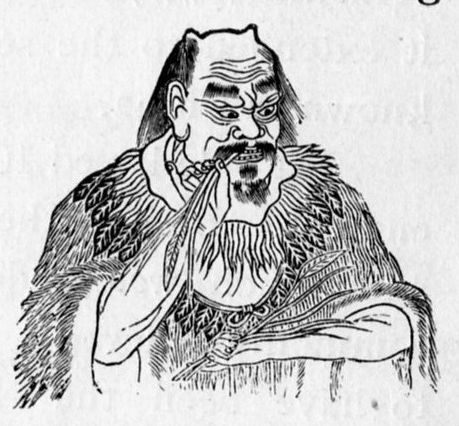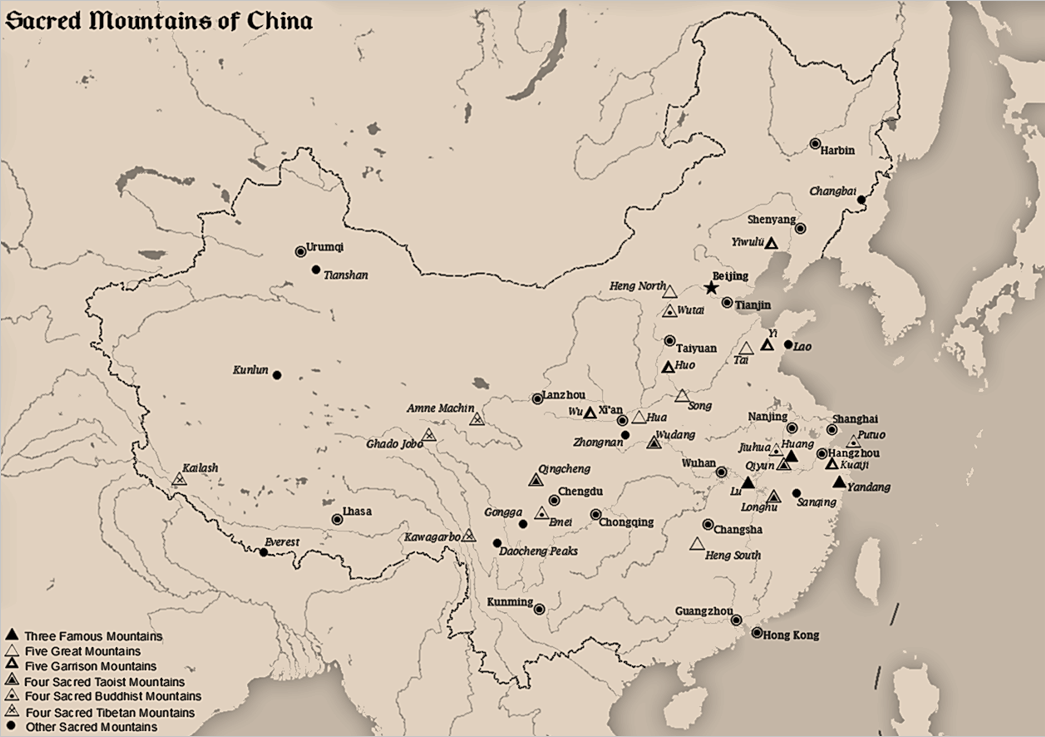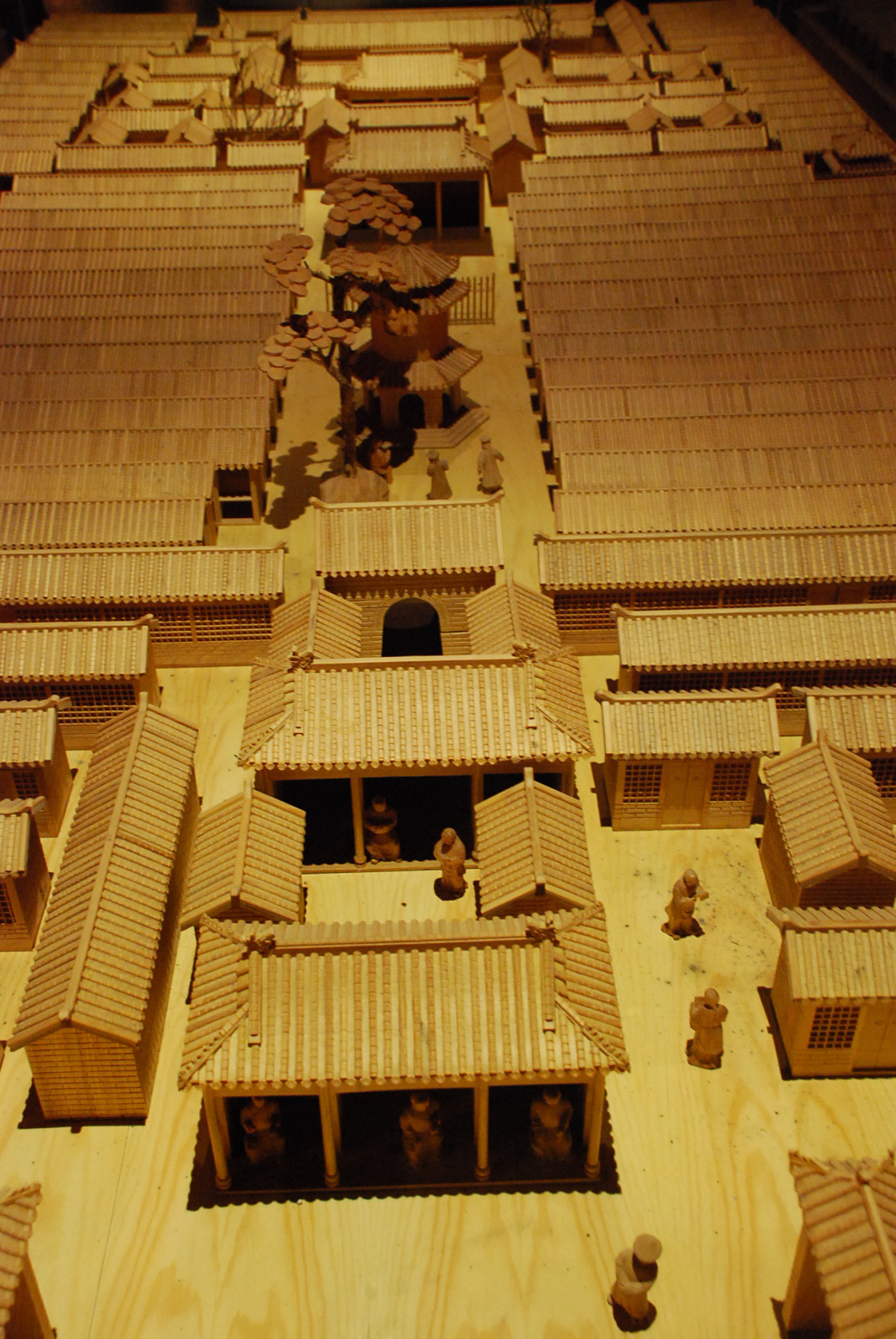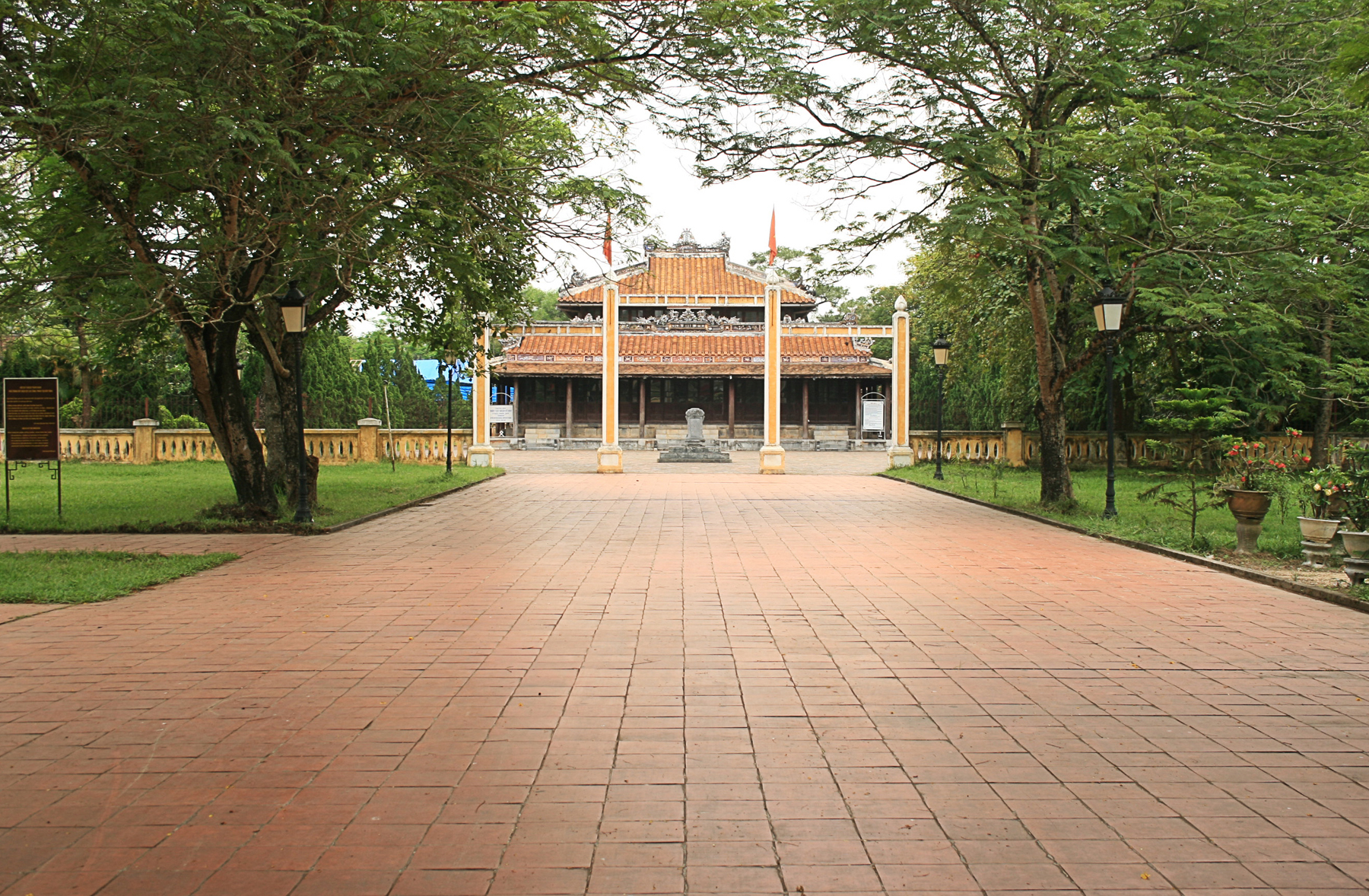|
Huashu
The (), or The ''Book of Transformations'', is a 930 CE Daoist classic about " internal alchemy", psychological subjectivity, and spiritual transformation. In the description of Poul Andersen, The is a unique philosophical work of the period of the Five Dynasties, which syncretizes elements of Taoist, Buddhist, and Confucian thought, and which has been noted in recent times for its scientific observations (for instance regarding optics and acoustics) and for its unusual emphasis on epistemological considerations. Its influence during the Song and subsequent dynasties was substantial, both within Taoist and Confucian metaphysics, and especially as foundation of alchemical thought. Authors Authorship of the is associated with three people. The Southern Tang (937–975 CE) chancellor Song Qiqiu first published it under his name, but evidence suggests he plagiarized the from its primary author Tan Qiao , who later scholars confabulated with another roughly contemporaneous Daoist ... [...More Info...] [...Related Items...] OR: [Wikipedia] [Google] [Baidu] |
Daoist
Taoism or Daoism (, ) is a diverse philosophical and religious tradition indigenous to China, emphasizing harmony with the Tao ( zh, p=dào, w=tao4). With a range of meaning in Chinese philosophy, translations of Tao include 'way', 'road', 'path', or 'technique', generally understood in the Taoist sense as an enigmatic process of transformation Ultimate reality, ultimately underlying reality. Taoist thought has informed the development of various practices within the Taoist tradition and beyond, including forms of Taoist meditation, meditation, Chinese astrology, astrology, qigong, feng shui, and Neidan, internal alchemy. A common goal of Taoist practice is self-cultivation, a deeper appreciation of the Tao, and more harmonious existence. Taoist ethics vary, but generally emphasize such virtues as ''wu wei, effortless action'', ziran, ''naturalness'', ''pu (Taoism), simplicity'', and the Three Treasures (Taoism), three treasures of compassion, frugality, and humility. The co ... [...More Info...] [...Related Items...] OR: [Wikipedia] [Google] [Baidu] |
Nanjing
Nanjing or Nanking is the capital of Jiangsu, a province in East China. The city, which is located in the southwestern corner of the province, has 11 districts, an administrative area of , and a population of 9,423,400. Situated in the Yangtze River Delta, Nanjing has a prominent place in Chinese history and Chinese culture, culture, having served as the historical capitals of China, capital of various Dynasties in Chinese history, Chinese dynasties, kingdoms and republican governments dating from the 3rd century to 1949, and has thus long been a major center of culture, education, research, politics, economy, transport networks and tourism, being the home to Port of Nanjing, one of the world's largest inland ports. The city is also one of the fifteen sub-provincial city, sub-provincial cities in the People's Republic of China's Administrative divisions of the People's Republic of China, administrative structure, enjoying jurisdictional and economic autonomy only slightly les ... [...More Info...] [...Related Items...] OR: [Wikipedia] [Google] [Baidu] |
Bigu (avoiding Grains)
''Bigu'' () is a Daoist fasting technique associated with achieving ''xian'' "transcendence; immortality". Grain avoidance is related to multifaceted Chinese cultural beliefs. For instance, ''bigu'' fasting was the common medical cure for expelling the ''sanshi'' " Three Corpses", the malevolent, grain-eating spirits that live in the human body (along with the hun and po souls), report their host's sins to heaven every 60 days, and carry out punishments of sickness and early death. Avoiding "grains" has been diversely interpreted to mean not eating particular foodstuffs (food grain, cereal, the Five Grains, ''wugu'', or staple food), or not eating any food (inedia). In the historical context of traditional Chinese culture within which the concept of ''bigu'' developed, there was great symbolic importance connected with the five grains and their importance in sustaining human life, exemplified in various myths and legends from ancient China and throughout subsequent history. The con ... [...More Info...] [...Related Items...] OR: [Wikipedia] [Google] [Baidu] |
Henan
Henan; alternatively Honan is a province in Central China. Henan is home to many heritage sites, including Yinxu, the ruins of the final capital of the Shang dynasty () and the Shaolin Temple. Four of the historical capitals of China, Luoyang, Anyang, Kaifeng and Zhengzhou, are in Henan. While the province's name means 'south of the river', approximately a quarter of the province lies north of the Yellow River. With an area of , Henan covers a large part of the fertile and densely populated North China Plain. Its neighboring provinces are Shaanxi, Shanxi, Hebei, Shandong, Anhui, and Hubei. Henan is China's third-most populous province and the most populous among inland provinces, with a population of over 99 million as of 2020. It is also the world's seventh-most populous administrative division; if it were a country by itself, Henan would be the 17th-most populous in the world, behind Egypt and Vietnam. People from Henan often suffer from regional discrimination ... [...More Info...] [...Related Items...] OR: [Wikipedia] [Google] [Baidu] |
Mount Song
Mount Song (, "lofty mountain") is an isolated mountain range in north central China's Henan Province, along the southern bank of the Yellow River. It is known in literary and folk tradition as the central mountain of the Five Great Mountains of China. Since at least as early as the early 1st millennium BC, Chinese astronomical mythology had acquired the idea that Mount Song is "the centre of Heaven and Earth." It was respected as such by the successive dynasties of the Chinese Empire. The name Songshan also applies to a peak of the range located at , elevation . It is the 4th highest peak, but second in prominence at . Songshan National Scenic Spot is named after it. The highest peak in the range is Lian Tian Feng at , also most prominent at . It is located at the coordinates shown for the article. On its upper slopes is the Sanhuangzhai Scenic Spot, further west seen from Route G1516 (Yanluo Expressway), which skirts the range on the south. The location is across the Shaoyang v ... [...More Info...] [...Related Items...] OR: [Wikipedia] [Google] [Baidu] |
Sacred Mountains Of China
The Sacred Mountains of China are divided into several groups. The ''Five Great Mountains'' () refers to five of the most renowned mountains in Chinese history, which have been the subjects of imperial pilgrimage by emperors throughout ages. They are associated with the supreme God of Heaven and the five main cosmic deities of traditional Chinese religion. The group associated with Buddhism is referred to as the ''Four Sacred Mountains of Buddhism'' (), and the group associated with Taoism is referred to as the ''Four Sacred Mountains of Taoism'' (). The sacred mountains have all been important destinations for pilgrimage, the Chinese term for pilgrimage () being a shortened version of an expression which means "paying respect to a holy mountain" (). The Five Great Mountains The ''Five Great Mountains'' or ''Wuyue'' are arranged according to the five cardinal directions of Chinese geomancy, which includes the center as a direction. The grouping of the five mountains appear ... [...More Info...] [...Related Items...] OR: [Wikipedia] [Google] [Baidu] |
Xian (Taoism)
A ''xian'' ( zh, s=仙, t=僊, p=xiān, w=hsien) is any manner of immortal or mythical being within the Taoist Pantheon (religion), pantheon or Chinese folklore. has often been translated into English as "immortal" or "wizard". Traditionally, ''xian'' refers to entities who have attained immortality and supernatural or Magic (supernatural), magical abilities later in life, with a connection to the heavenly realms inaccessible to mortals. This is often achieved through spiritual Self-cultivation#Taoism and the authentic self, self-cultivation, Chinese alchemy, alchemy, or worship by others. This is different from the Deity, gods (Deity, deities) in Chinese mythology and Taoism. ''Xian'' is also used as a descriptor to refer to often benevolent figures of great historical, spiritual and cultural significance. The Quanzhen School of Taoism, Daoism had a variety of definitions for during its history, including a metaphorical meaning where the term simply means a good, principl ... [...More Info...] [...Related Items...] OR: [Wikipedia] [Google] [Baidu] |
Imperial Examination
The imperial examination was a civil service examination system in History of China#Imperial China, Imperial China administered for the purpose of selecting candidates for the Civil service#China, state bureaucracy. The concept of choosing bureaucrats by merit rather than by birth started Imperial examination in Chinese mythology, early in Chinese history, but using written examinations as a tool of selection started in earnest during the Sui dynasty (581–618), then into the Tang dynasty (618–907). The system became dominant during the Song dynasty (960–1279) and lasted for almost a millennium until its abolition during the late Qing reforms, late Qing dynasty reforms in 1905. The key sponsors for abolition were Yuan Shikai, Yin Chang and Zhang Zhidong. Aspects of the imperial examination still exist for entry into the civil service of both China and Taiwan. The exams served to ensure a common knowledge of writing, Chinese classics, and literary style among state officials. ... [...More Info...] [...Related Items...] OR: [Wikipedia] [Google] [Baidu] |
Confucian
Confucianism, also known as Ruism or Ru classicism, is a system of thought and behavior originating in ancient China, and is variously described as a tradition, philosophy, religion, theory of government, or way of life. Founded by Confucius in the Hundred Schools of Thought era (c. 500 BCE), Confucianism integrates philosophy, ethics, and social governance, with a core focus on virtue, social harmony, and familial responsibility. Confucianism emphasizes virtue through self-cultivation and communal effort. Key virtues include '' ren'' (benevolence), '' yi'' (righteousness), '' li'' (propriety), '' zhi'' (wisdom), and '' xin'' (sincerity). These values, deeply tied to the notion of '' tian'' (heaven), present a worldview where human relationships and social order are manifestations of sacred moral principles.. While Confucianism does not emphasize an omnipotent deity, it upholds ''tian'' as a transcendent moral order. Confucius regarded himself as a transmitter of cultura ... [...More Info...] [...Related Items...] OR: [Wikipedia] [Google] [Baidu] |
Tang Dynasty
The Tang dynasty (, ; zh, c=唐朝), or the Tang Empire, was an Dynasties of China, imperial dynasty of China that ruled from 618 to 907, with an Wu Zhou, interregnum between 690 and 705. It was preceded by the Sui dynasty and followed by the Five Dynasties and Ten Kingdoms period. Historians generally regard the Tang as a high point in Chinese civilisation, and a Golden age (metaphor), golden age of cosmopolitan culture. Tang territory, acquired through the military campaigns of its early rulers, rivalled that of the Han dynasty. The House of Li, Li family founded the dynasty after taking advantage of a period of Sui decline and precipitating their final collapse, in turn inaugurating a period of progress and stability in the first half of the dynasty's rule. The dynasty was formally interrupted during 690–705 when Empress Wu Zetian seized the throne, proclaiming the Wu Zhou dynasty and becoming the only legitimate Chinese empress regnant. The An Lushan rebellion (755 ... [...More Info...] [...Related Items...] OR: [Wikipedia] [Google] [Baidu] |
Guozijian
The Guozijian,Yuan, 194. sometimes translated as the Imperial College, Imperial Academy, Imperial University, National Academy, or National University, was the highest level academic and educational institution throughout most of imperial China's history. It was created under the reign of Emperor Wu of Jin (r. 265–289) and became the highest level academic institution in China over the next 200 years. After the demise of the Song dynasty (960–1279), it became synonymous with the previous highest level academic institution, the '' Taixue''. The Guozijian was abolished in 1907 during the Qing dynasty. History Origin The Guozijian (''Directorate of Education'') was founded under Emperor Wu of Jin (r. 265–289) to educate the nobility. After the nine rank system was introduced for grading bureaucrats in the Chinese government, the Guozijian was created for persons rank five and above, effectively making it the educational institution for nobles, while the Taixue was releg ... [...More Info...] [...Related Items...] OR: [Wikipedia] [Google] [Baidu] |
Courtesy Name
A courtesy name ( zh, s=字, p=zì, l=character), also known as a style name, is an additional name bestowed upon individuals at adulthood, complementing their given name. This tradition is prevalent in the East Asian cultural sphere, particularly in China, Japan, Korea, Taiwan and Vietnam. Courtesy names are a marker of adulthood and were historically given to men at the age of 20, and sometimes to women upon marriage. Unlike art names, which are more akin to pseudonyms or pen names, courtesy names served a formal and respectful purpose. In traditional Chinese society, using someone's given name in adulthood was considered disrespectful among peers, making courtesy names essential for formal communication and writing. Courtesy names often reflect the meaning of the given name or use homophonic characters, and were typically disyllabic after the Qin dynasty. The practice also extended to other East Asian cultures, and was sometimes adopted by Mongols and Manchu people, Manchus ... [...More Info...] [...Related Items...] OR: [Wikipedia] [Google] [Baidu] |










